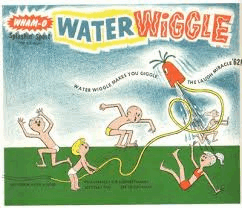The Common Core State Standards for math are sliced into two distinct halves:
Mathematical Practices and Content Standards
Together they offer:
Focus
Explicit instruction on grade level concepts
Coherence
Linking/extending previous learning and new information
Rigor
Conceptual understanding/procedural skill/application
MATHEMATICAL PRACTICES
This is the kingdom of problem solving techniques. The practices are consistent across grade levels. The italics are my "translations."
Make sense of problems and persevere in solving them
Stick it out through all the steps in a mathematically sound way.
Reason abstractly and quantitatively.
Use number sense, picture sense, charts and graphs.
Construct viable arguments and critique the reasoning of others.
Explain WHY and HOW you or someone else came to an answer.
Model with mathematics.
Equations, expressions, proofs
Use appropriate tools strategically
Technology
Attend to precision.
Don't panic - be systematic
Look for and express regularity in repeated reasoning. Patterns/Connections
CONTENT STANDARDS
Here are the strands for fifth grade. Strands may vary at different grade levels, especially in the early grades or when you cross over into middle school and beyond.
This is where I am doing the happy dance. Have you ever tried to teach a ten-year-old to calculate the surface area of a rectangular solid with fractions and decimals, or to subtract negative integers in several permutations? It's no picnic. With Common Core the shift in concepts (pushing more difficult ones to older grades) is more in line with my students' developmental abilities.
Operations and Algebraic Thinking - OA
Expressions, Equations, Prime Factorization, Order of Operations, Input/Output Boxes
Number and Operations in Base Ten - NBT
Whole number and decimal operations, Place Values
Number and Operations - Fractions - NF
Fractions and Mixed Numbers
Measurement and Data - MD
Charts and Graphs, Volume
Geometry - G
Two dimensional figures, The Coordinate Plane
Freak Out Alert -
Many of my colleagues in the primary grades are concerned about the heightened expectations, especially in problem solving for the younger kiddos.
Double Freak Out Alert -
During the transition to Common Core, we teachers have to figure out where to fill gaps that may occur between grade levels to make sure students are ready to tackle certain concepts.
Yes, it is going to be boatloads of additional work for we underpaid and overworked educators as we transition to Common Core.
Is it worth it?
I think so.
This link chats about the technology tie in to Common Core. Scroll down to Page 2 for the quick list. Digital Literacy
This week's video is a speedy fly-by of Mathematical Practices.
Keep those questions coming. Have a great week.
















